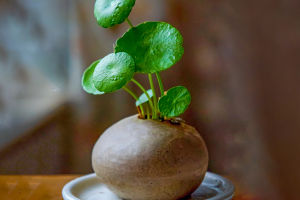Prunus 'Kanzan', often regarded as a gem in the cherry blossom family, is celebrated for its stunning floral display and rich cultural significance.
As a famous ornamental cherry blossom, Prunus 'Kanzan' is cherished not only for its colorful flowers but also for the deep symbolism it carries within various cultures, particularly in Japan.
This article delves into the characteristics, cultivation methods, and symbolic importance of Prunus 'Kanzan', highlighting its prominence in horticulture and culture.
Characteristics of Prunus 'Kanzan'
Prunus 'Kanzan' stands out as one of the most popular cherry blossom varieties in Japan. The tree's elegant shape can reach a height of 5 to 8 meters, forming a broad, umbrella-like canopy.
This makes it an ideal choice for garden landscapes and park beautification projects. The flowering period of Prunus 'Kanzan' typically spans from mid-April to early May.
During this time, the tree is adorned with dense clusters of double-petaled, bright pink flowers, each about 5 cm in diameter. From a distance, the blossoms appear as a vibrant pink cloud, creating a breathtaking view.
The foliage of Prunus 'Kanzan' also adds to its aesthetic appeal. In spring, the leaves emerge a copper-red color, transitioning to dark green in summer, and finally turning a striking orange-red in autumn.
This transformation offers a dynamic visual experience throughout the seasons. Additionally, the tree's bark is grey-brown, smooth, and shiny, providing ornamental value even when the tree is not in bloom.
Cultivation and Maintenance of Prunus 'Kanzan'
1. Soil and Environment: Prunus 'Kanzan' thrives in well-drained, fertile loam. It prefers sunny environments and is cold-tolerant but sensitive to waterlogged conditions. When selecting a planting site, avoid low-lying areas prone to water accumulation.
2. Planting Time: The ideal time for planting is from late autumn after leaf fall to early spring before budding. During this period, the trees are in a dormant state, increasing the transplant survival rate.
3. Fertilization and Watering: Fertilize Prunus 'Kanzan' with compound fertilizer once before budding and once after flowering in spring.
This promotes flower bud differentiation and healthy branch and leaf growth. Watering should be adjusted according to weather and soil moisture, ensuring the soil remains moist but not waterlogged.
4. Pruning and Pest Control: Prunus 'Kanzan' requires minimal pruning. However, it is crucial to promptly remove diseased, insect-infested, dead, or overly dense branches to maintain a beautiful tree shape.
Common pests and diseases include aphids, spider mites, and cherry blossom rust. These can be managed using a combination of physical control methods and chemical treatments.
The Cultural Symbolism of Prunus 'Kanzan'
Prunus 'Kanzan' holds profound symbolic meaning in Japanese culture. Cherry blossoms symbolize the ephemeral nature of life and the fleeting beauty of existence.
Every spring, cherry blossom viewing becomes a cherished activity for the Japanese people. Families and friends gather under the blooming trees to appreciate the flowers, share food and drink, and celebrate the beauty of the moment.
With its lush, vibrant blooms, Prunus 'Kanzan' symbolizes prosperity, happiness, and beauty. In classical Japanese literature and art, cherry blossoms often serve as metaphors for the transient beauty of life and the poignant reminder of mortality.
In contemporary times, cherry blossoms continue to play a significant role in celebrations, decorations, and even gift packaging, embodying a sense of hope and renewal.
Conclusion
Prunus 'Kanzan', with its captivating flowers and deep cultural connotations, stands as a symbol of spring and beauty in many people's minds.
Whether in gardens, parks, or within the realms of literature and art, Prunus 'Kanzan' commands attention with its unique charm. In modern horticulture, it not only serves as a key species for environmental beautification but also as a medium for conveying beauty and hope.


